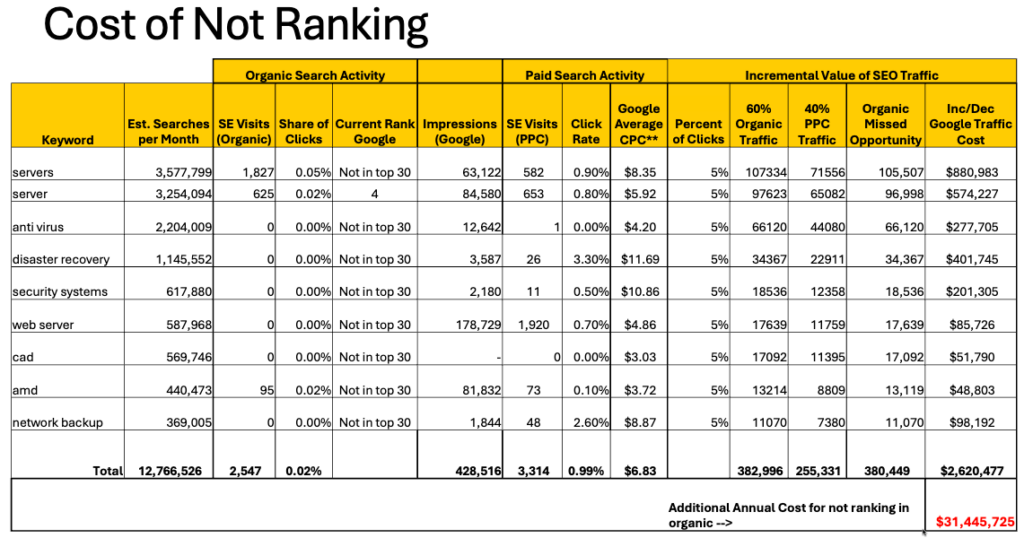Calculating the Cost of Not Ranking
The Cost of Not Ranking model was created over 25 years ago out of frustration with executives who only wanted to use paid search. Specifically, this to an F100 executive was only advertising-focused and did not want to spend money on SEO. At that time, they were paying around $500k a month across Yahoo, AltaVista, and GoTo to own various keywords related to their business. The CEO hired my agency to do an SEO audit and recommend changes to make them rank better after board members grilled him for not being found in search engines. We delivered a 100+ page report of recommended changes and were told by the CMO and CTO that there were no resources to make the necessary changes.
In my frustration, I pointed out that they had $5.5 million to pay to “rent traffic,” most of which we could get for free with some fundamental web changes. The Cost of Not Ranking model created shock and awe and changed the minds of a few senior executives who wanted to invest in their website. Ultimately, we drove 3x of the revenue paid search ads for a fraction of the cost.

This model calculates the cost of using paid search to make up the difference of lost organic traffic or to show the traffic you could/should get for free via organic search if you focused on optimizing the site. Understanding this cost and developing a strategic plan to reallocate funds to cover either a short-term drop and/or potentially long term. As many of these companies indicate in their annual reports, a loss of organic traffic would significantly change their costs and acquisition models
If you are interested in this cost-of-not-ranking model, look at the article I wrote in 2010 explaining the different calculations and fields. In this example, a similar-sized company’s risk of losing the top rank for just seven words could cost them $2.3 million in increased Paid Search Costs. We have integrated this into DataPrizm as an alert and an opportunity metric.
